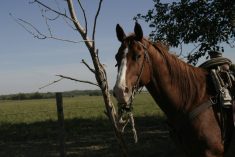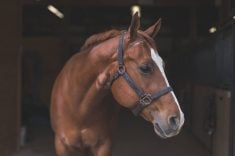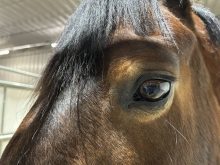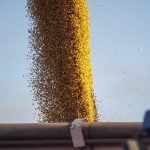The horse is remarkably adapted and adept at staying warm as the winter season arises and temperatures plunge into the double digits.
In order to stay warm, the horse requires resources to do so. If its environment and circumstance do not meet the requirements needed to physiologically thermoregulate and generate internal heat, the horse may depend upon blanketing to be comfortable.
This has led to the widespread practice in modern horse keeping to indiscriminately clothe the horse during the winter season.
As comforting as it may be to outfit the horse for winter, they are well prepared to stay warm in the cold winter months on their own with appropriate care. However, to the degree that husbandry practices remove it from its natural lifestyle and put it into working situations, the natural abilities of the horse to thermoregulate and remain comfortable become compromised.
Read Also

Ignoring growth plates sabotages young horse development
Young horse training plans and workloads must match their skeletal development. Failing to plan around growth plates can create lifelong physical problems.
So then it becomes equally true, some horses do not need to be blanketed whereas other horses do need to be blanketed, depending on the lifestyle they are in.
Horses prepare themselves for the winter season and begin preparations for the cold weather as early as the summer solstice when their winter coat begins its growth and development. Although the remarkable insulating properties of the horse’s winter coat are a result of its increased length and thickness, it is the property of loft that bestows a responsive insulating layer. The tiny piloerector muscles associated with individual hair shafts have the ability to loft or stand up, lay down and change the direction of the hairs and thus trap air close to the body and insulating the horse from the cold. ‘Loft’ gives the horse’s winter coat its robust appearance.
Blanketing affects this. Within weeks of blanketing, the piloerector muscles responsible for lofting, like any muscle in the body that is not exercised, begin to atrophy.
The insulating qualities of the winter coat is further bolstered by its contents of natural oils which shed moisture. (Donkeys and mules lack this advantage, and so are more vulnerable to hypothermia if shelter is not provided.)
The second line of defence is the accumulation of a layer of fat under the skin. The extra fat also serves as a calorie reserve for the animal. Ideally horses are moderately fleshy, with a body condition score around six (based on a nine-point Body Condition Score system) at the onset of winter.
The animal’s evolutionary physiology has come to rely on mobilizing fat stores that have accumulated during summer when forages are abundant. Mobilization of adipose tissues during the winter period is part of a healthy seasonal body rhythm, and may even be necessary to minimize the risk of obesity. Monitoring body condition is essential during winter and provides valuable information for management practices.
Horses have a need to move and they can have an even greater need to move during winter, when they benefit from the warmth generated by muscular activity. They have a vast circulatory system which moves the heat generated within one part of the body throughout the body. If the temperature drops unexpectedly the horse may shiver, step lightly, frolic, buck, act out or do whatever it takes to get warmed up.
These are valuable tools available to generate body heat over a short term. Horses with ample room in a herd environment will commonly move each other around adding to their quotient of warmth. Horses housed in small dry lots and paddocks can become internally chilled and immunologically offended due to their limited ability to employ this avenue for heat generation.
The opportunity to engage in the activity of pawing on well-stocked pastures whether full time or in addition to the provision of hay is a physiological win for horses. It both provides the warmth of muscular movement as well as the steady flow of forage.
The hindgut is the horse’s internal furnace and a constant and steady flow of forages or hay keeps the internal fires stoked. The greatest amount of long-lasting internal heat available to the horse to maintain its core body temperature is released when the microbes in the hindgut (cecum and large colon) digest and ferment large amounts of long-stemmed plant fibre.
Often owners increase the grain or the processed portion of the feed ration in an attempt to help the horse keep warm during particularly cold spells. However, increasing a horse’s forage in the winter is the most effective way to help a horse stay warm, especially when temperatures fall below -20 C.
The general health of the horse is strengthened by basking in the warmth of a strong winter’s sunshine. It is not uncommon to find a herd of horses become quiet, cease all activity and line up like a series of solar panels to absorb and rest in the radiant heat of a sunny winter’s afternoon. A well-rested horse is better able to cope with the cold temperatures.
By respecting, understanding and fortifying the impressive list of strategies available to the horse to survive and even thrive the vagaries of the winter season horses owners have an opportunity to align with the natural world and add considerable value to the horse’s health and welfare.
















